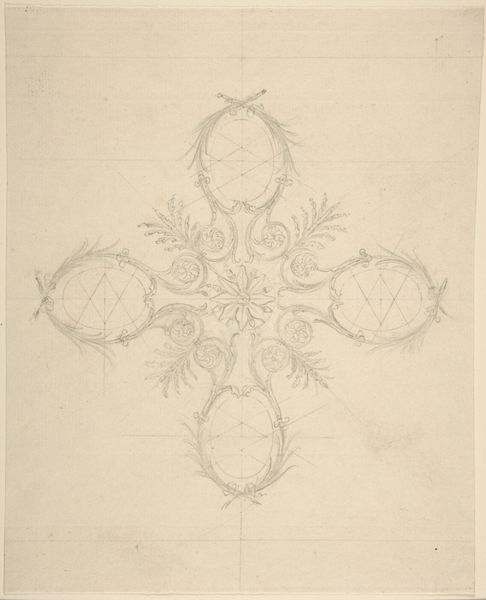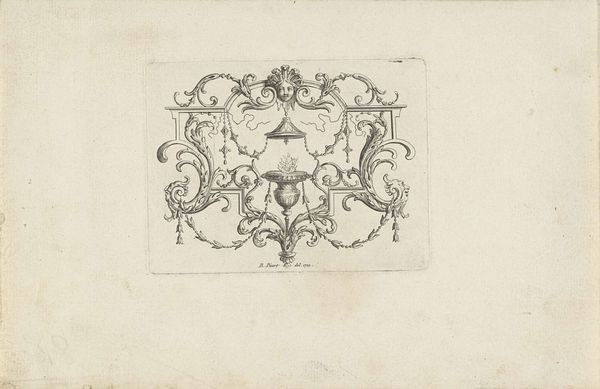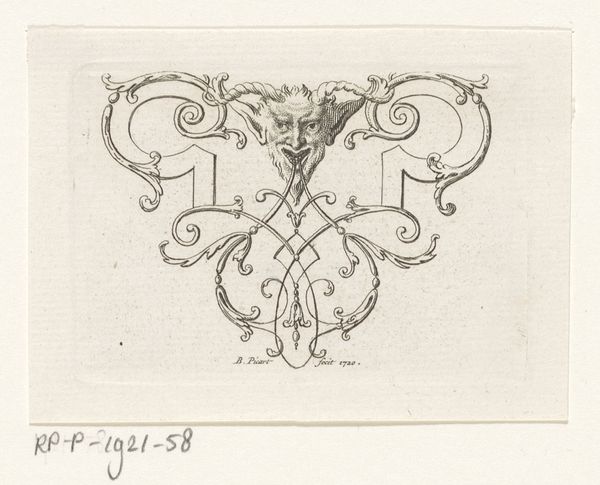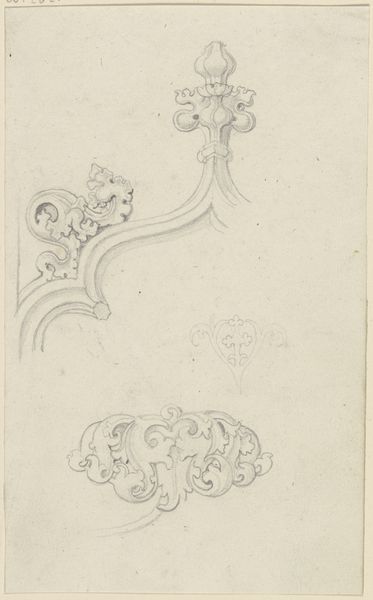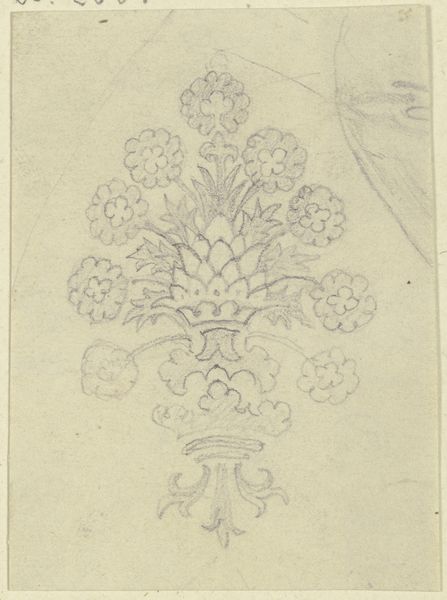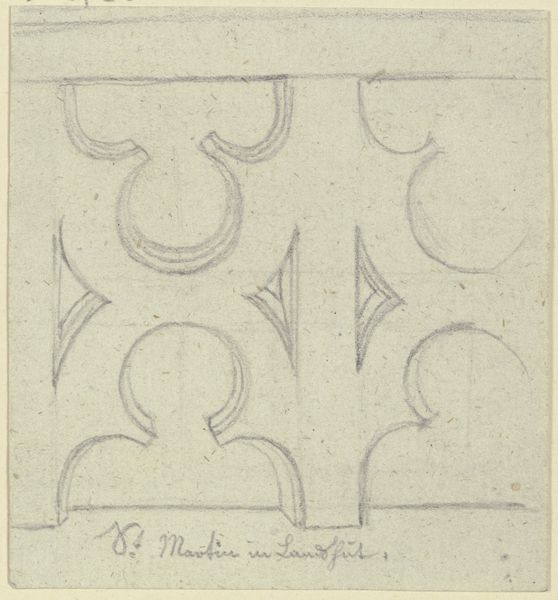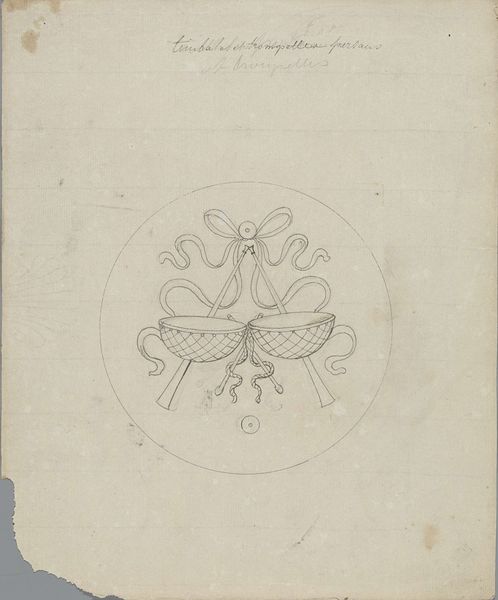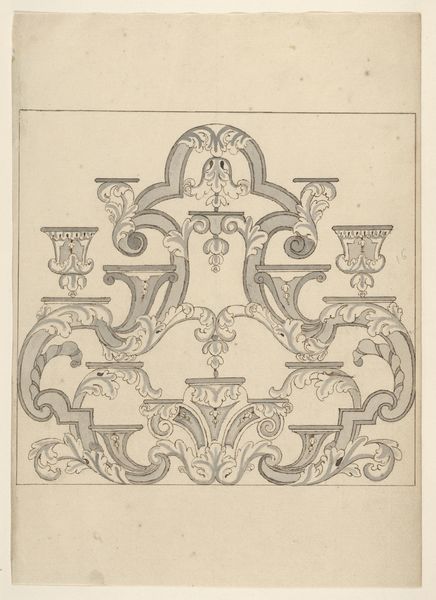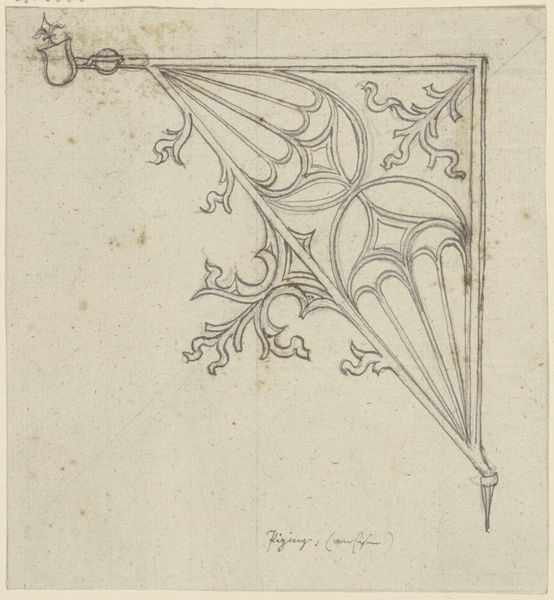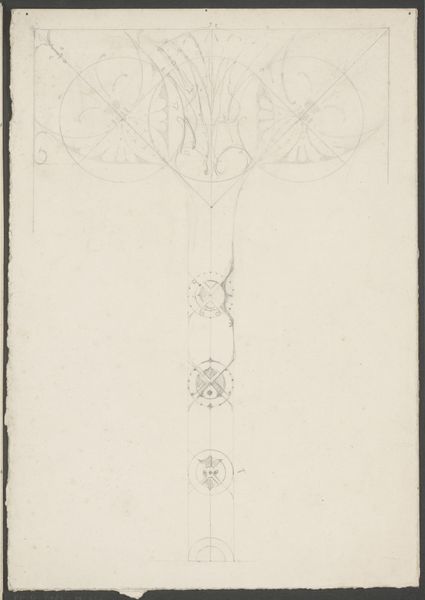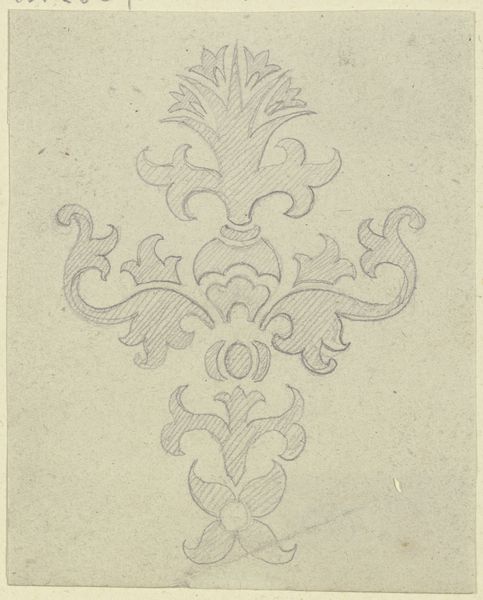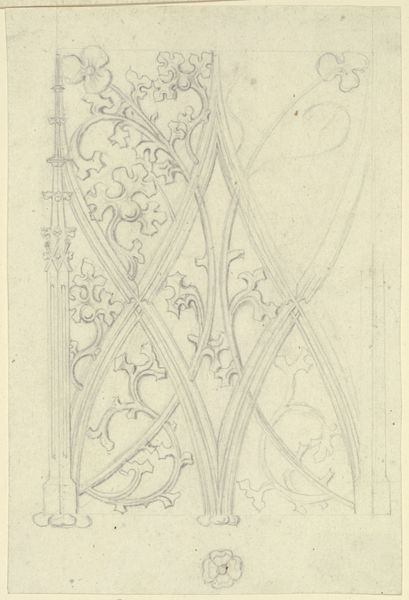
drawing, ornament, paper, pencil, architecture
#
drawing
#
ornament
#
medieval
#
paper
#
pencil
#
architecture
Copyright: Public Domain
Editor: Here we have a pencil drawing on paper, "Rankenornament im Scheitel eines Kielbogens," which translates to "Foliage Ornament in the Apex of a Pointed Arch," by Karl Ballenberger. It has this delicate, almost tentative feel to it. What draws your attention in this piece? Curator: What strikes me is how this drawing reveals the intense study and cataloging of architectural details that was very much part of the 19th-century historic preservation movement. Here, Ballenberger is not just rendering a pretty image; he’s engaging with the visual language of the medieval past. How do you see the connection between this study and the broader culture of the time? Editor: I guess I hadn’t thought about the connection to preservation. I was mostly focused on the drawing as an object in itself. So, is the act of drawing itself a way of claiming ownership, or understanding? Curator: Precisely! Consider the political implications. By meticulously recording these details, architects and artists were essentially building a visual archive, asserting a kind of cultural authority over the past. This feeds into larger narratives of national identity and historical continuity. This focus on meticulous documentation also highlights a specific type of looking. Is this the objective looking of a scientist? Or is there something more deeply political embedded here? Editor: That's fascinating! So it’s not just about appreciating the artistry; it's also about claiming a cultural legacy. Curator: Exactly. And think about how museums and galleries play into this. They become the gatekeepers of these legacies, shaping public perception of history and artistic value. This close looking is far from a neutral activity; it shapes not just what we see, but how we think about the past in relation to the present. What did you learn from looking closer? Editor: It really shifted my perspective to think about the political power behind the documentation of art. I will remember to look into the circumstances of its making, and what roles it played for the artist and commissioner. Curator: It also reminds me of how the simple act of observing and drawing can be loaded with complex meanings about cultural heritage.
Comments
No comments
Be the first to comment and join the conversation on the ultimate creative platform.
